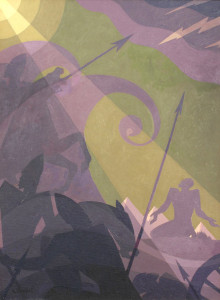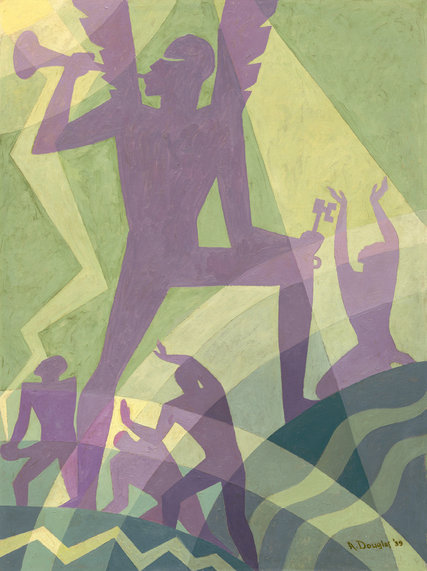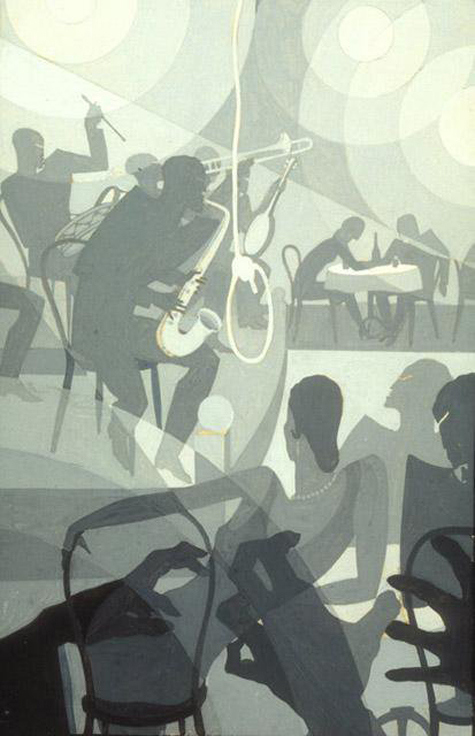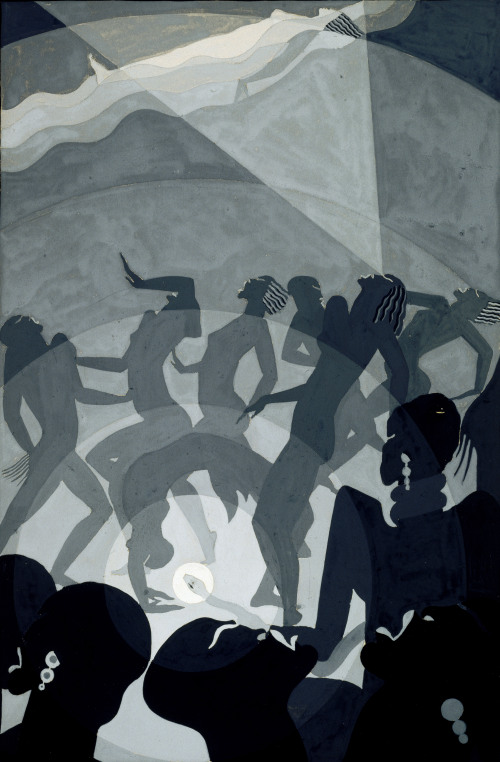
In collection Metropolitan Museum of Art New York: ‘Let My People Go’, ca.1934-1939
About:
Harlem’s avant-garde culture of the 1920s was inseparable from Modernism, and no one else captured this powerful pairing, emblematic of the Jazz Age, with the rigor and strength of Aaron Douglas (1899-1979), a painter, muralist, and illustrator who is considered the foremost visual artist of the Harlem Renaissance. Douglas’s use of African design and subject matter in his work brought him to the attention of W.E.B. Du Bois and Alain Locke, who were pressing for young African American artists to express their African heritage and African American folk culture in their art. His work was published regularly in The Crisis, as well as in Opportunity and Vanity Fair. His most famous illustrations were for James Weldon Johnson’s book of poetic sermons, God’s Trombones (1927). Alain Locke called Douglas a “pioneering Africanist” and used his illustrations in his famous anthology, The New Negro (1925), in which Locke’s classic essay “The Legacy of the Ancestral Arts” appeared.
 Aspiration, ca.1936.
Aspiration, ca.1936.
Douglas created numerous large-scale murals that portray subjects from African American history and contemporary life in epic allegories. In 1934, he was commissioned, under the sponsorship of the Public Works of Art Project (PWAP), to paint a series of murals for The New York Public Library’s 135th Street branch, now the Schomburg Center for Research in Black Culture. Among his best-known works, the four panels of Aspects of Negro Life are characteristic of Douglas’s style, with graphically incisive motifs and the dynamic incorporation of such influences as African sculpture, jazz music, dance, and abstract geometric forms. One of the murals, Song of the Towers, depicts a figure fleeing from the hand of serfdom. It is symbolic of the migration of African peoples from the rural South and the Caribbean to the urban industrial centers of the North just after World War I. Standing on the wheel of life in the center of the composition, a saxophonist expresses the creativity of the 1920s and the freedom it afforded the “New Negro.” Douglas joined the faculty of Fisk University in 1937 and stayed there until his retirement in 1966. A true pioneer, his artistic insight has had a lasting influence on American art history and the nation’s culture heritage, and is a testament to the themes of African heritage and racial pride.

Judgment Day, 1939.
________________________________________
Aaron Douglas. Aspects of Negro Life. Mural series comprised of four panels: Song of the Towers, From Slavery Through Reconstruction, An Idyll of the Deep South, and The Negro in an African Setting. Oil on canvas, 1934.
Text: The New York Public Library, Schomburg Center for Research in Black Culture, Art and Artifacts Division.
 Charleston, ca. 1928.
Charleston, ca. 1928.
 Congo, ca. 1928.
Congo, ca. 1928.
